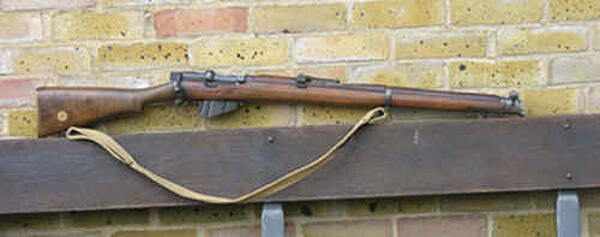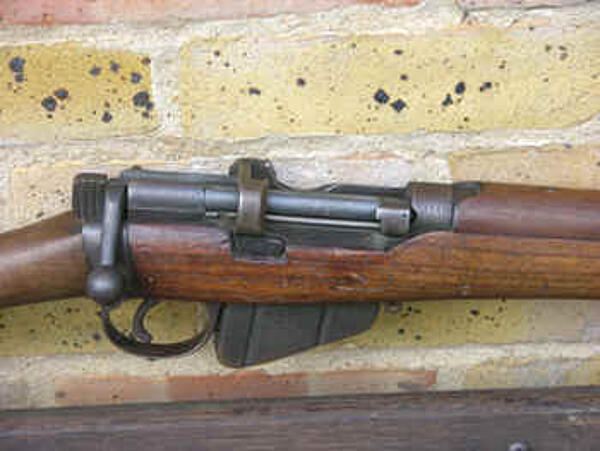Lee Enfield Rifle
The Lee Enfield rifle was the standard issue weapon for all infantry in the British Army during World War One.
First produced in 1907, the Lee Enfield was designed by an American weapons expert called James Lee and produced at the Royal Small Arms Factory in Enfield - hence its name.

While not necessarily the most notable weapon of the war, the Lee Enfield did its job well and enjoyed a good reputation among the British troops. Featuring a ten-bullet magazine and a high rate of fire, it was relatively successful in a number of the war’s greatest battles, including the Battle of Mons.
In fact, the gun had such a high rate of fire in trained hands that German troops at Mons believed they were being attacked by machine guns rather than standard issue rifles. In general, a well-trained infantryman could achieve a rate of fire of 12 bullets a minute.
Unfortunately, like all weapons, the Lee Enfield did have its flaws. Most notably, it struggled to stay clean in the field of battle, being prone to clogging in the mud. This meant the dirt and grit would regularly become jammed in the firing mechanisms and result in misfire.

Of course, in the heat of battle, a poorly firing gun was not acceptable and as such the soldiers were encouraged to clean their gun as regularly and thoroughly as possible. When not on the battlefield, many men would even cover the firing mechanism with cloth to prevent any dirt or mud from finding its way inside, which was highly likely in the muddy trenches on the Western Front.
Thankfully, the butt of the Lee Enfield had ample space for cleaning equipment to be kept so many soldiers simply got into an effective cleaning routine to solve the problem.
This issue was considered minor when compared to the effectiveness of the Lee Enfield, and as such it was still the standard issue rifle for infantrymen in the British Army in World War Two, twenty years later.
MLA Citation/Reference
"Lee Enfield Rifle". HistoryLearning.com. 2025. Web.
